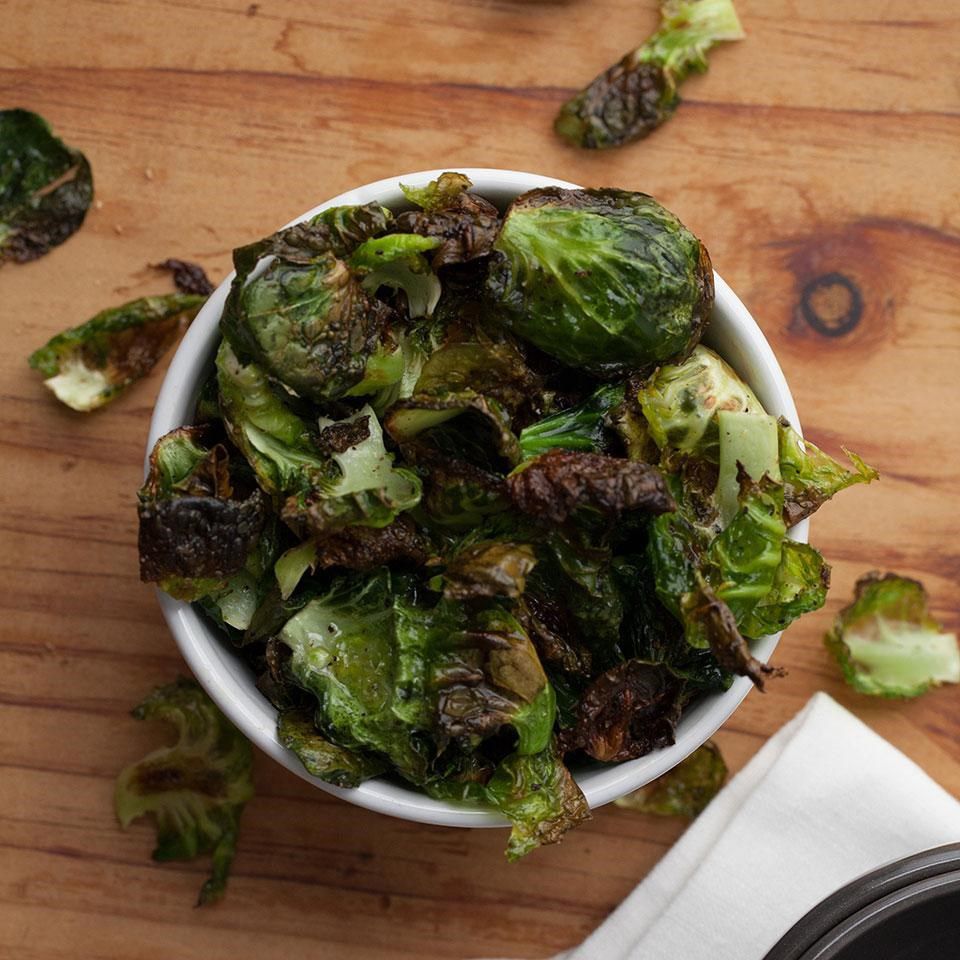Whether you're cooking a fall weeknight dinner or preparing a full spread, there is no seasonal green vegetable better than the Brussels sprout. These adorable little mini cabbages are easy to prepare and—did we mention?—absolutely delicious? If you think otherwise, perhaps you've experienced a Brussels sprout that had fallen victim to a cooking mishap. It happens. Give Brussel sprouts the treatment they deserve, and you'll feel the love again, we promise. Here are five common mistakes that ruin Brussels sprouts (and how to fix them).
Mistake to Avoid #1: Treating Small and Large Brussels the Same
Brussel Sprouts are found in different sizes and what you buy makes a difference. Larger Brussel Sprouts tend to have looser leaves and a strong cruciferous flavor (think the smell you get when you open a jar of sauerkraut). Smaller Brussel Sprouts are more compact and mild compared to their larger counterparts. Either version is fine, especially considering you often don't have the luxury of choice at the grocery store. But knowing that they're different will help your final product. Larger Brussels (about an inch around or larger) should be halved before cooking. Because they're somewhat dense, this will allow the inside and outside to cook at roughly the same rate. Smaller Brussels can be cooked whole.
Mistake to Avoid #2: Trimming too Much or Too Little

Brussel Sprouts are pretty low maintenance as far as vegetables go, but that doesn't mean they couldn't use a little TLC before you cook them. Trimming them helps eliminate part of the woody stem, but it can be tricky to trim them just right. Trim them too much and the leaves break away and burn during roasting. Don't trim them enough, and you'll be left with chewy ends that no amount of cooking can get rid of. So how do you know when enough is enough? Trim the very bottom of the stem right above where the first few leaves attach. If you lose a few leaves, that's ok. There should be plenty of core left to hold the Brussels sprout together while leaving the woody stem behind.
Mistake to Avoid #3: Choosing the Wrong Type of Heat

Any disdain you may harbor for Brussel Sprouts probably originated by eating them steamed or boiled. Steaming and boiling use moist heat, and moist heat can make Brussel Sprouts mushy and stinky—not a good combo. Give them the treatment they deserve by roasting them instead. Toss them in a bit of oil with a sprinkle of salt to start them off and roast them in a single layer on a baking sheet in a 425° (or higher) oven. The outside will caramelize and give them a sweet note while their texture softens but remains toothsome. If they're cut in half, roast them with the cut side down to make the most out of their sweet roasted flavor. Sauteeing, another dry heat method, is great for Brussels sprouts too. If you do opt for steaming, just be sure not to overcook the veggies—five to seven minutes should do it. Try our Brown Butter & Dill Brussels Sprouts for steamed Brussels done the right way. You can also boil Brussels very briefly before sauteing them, as in this recipe for Sauteed Brussels Sprouts with Bacon & Onions pictured above.
Mistake to Avoid #4: Letting the Brussels Sprouts Dry Out

Like soggy steamed Brussels, Brussels sprouts that are dry and chewy are no good either. This could be caused by using too little oil for roasting. You need a nice coating of oil—enough to make the heads shiny or if they're cut, enough oil to get inside the folds of some of the leaves. Without oil, Brussels don't brown and soften—they dehydrate. Its also possible that they simply need more time in the oven. Cooking times vary depending on their size. A cooked Brussels sprout should be pierced easily with the tip of a sharp knife. If all else fails and you need moisture stat, then slather them in cheese sauce or cook them in a gratin.
Mistake to Avoid #5: Forgetting to Add Bacon (Just Kidding, Sort of)

Despite your best efforts, Brussel sprouts are a tough sell for some folks. If simply roasting them plain isn't enough to inspire oohs and ahhs from your guests, consider taking your Brussels sprouts to a whole new level. You can shave them and eat them raw in salad, peel them apart and roast the leaves individually to make Brussel sprout chips or toss them with toasted nuts, dried fruit, cheese or—of course—bacon, which happens to make everything a little better and also happens to pair beautifully with Brussels sprouts.
For more on making the best Brussels sprouts, don't miss How to Cook Brussels Sprouts So They're Actually Delicious.
This article was written by Hilary Meyer from EatingWell and was legally licensed through the NewsCred publisher network. Please direct all licensing questions to legal@newscred.com.







